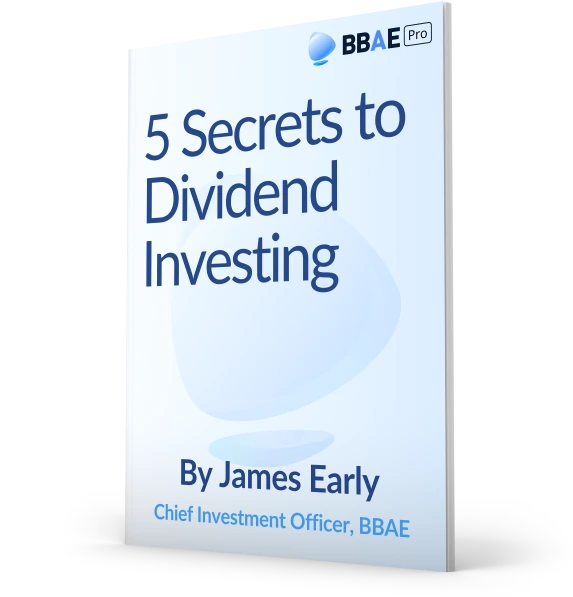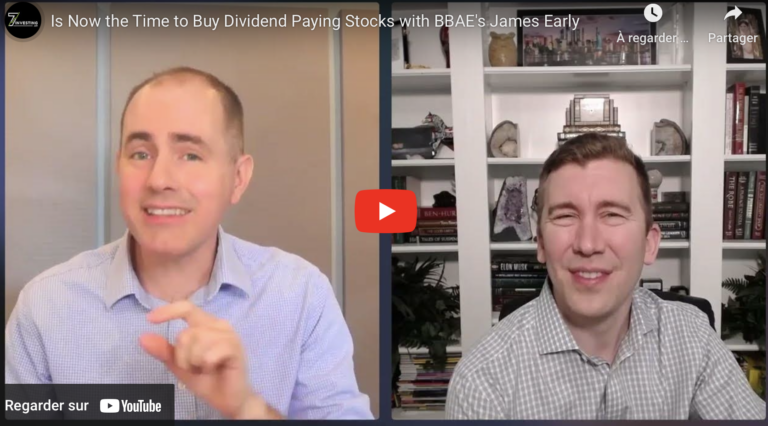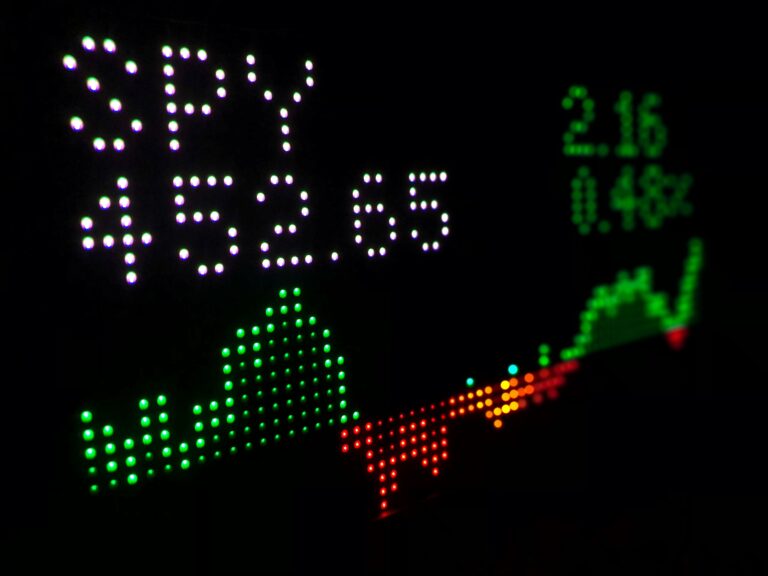Like your old pair of Levi’s, dividends are back in style. As one of America’s more prominent dividend investors for a decade, I’d like to share some points about dividends, mixing basic knowledge and some street smarts I’ve picked up along the way.
Why invest in dividend stocks?
Investors generally choose dividend stocks for at least one of three reasons:
- Dividend stocks obviously pay dividends, which you have the choice of keeping or reinvesting
- Dividend-paying companies tend to be safer, steadier, and more reliable
- Dividend stocks tend to perform better, per academic research
For example, Hartford Funds found that $10,000 invested in 1960 in the S&P 500 index would have grown to $641,091 on price growth alone, but $4,053,236 with dividends reinvested.
Because dividends are reallocations of returns, that’s in some ways (but not in all ways) a false comparison, but numerous other studies show dividend stocks to perform better than non-payers – one I mention in my dividend report (you can get it below) showed that dividend stocks outperform non-dividend stocks by 1% to 2% per month in declining markets.
How often are dividends paid?
In the US, quarterly dividends are most common, but a small group of companies (often REITs, a category I’ll explain later) pays monthly dividends – REIT Realty Income (NYSE: O) is probably the best-known, perhaps because it’s nicknamed itself “The Monthly Dividend Company,” but others exist.
Some companies in Europe (especially in the UK), Asia, and South American pay just two dividends per year – an interim and a final dividend is common nomenclature – and still others, including some US companies, issue a single dividend per year.
Especially from the receiver’s standpoint, timing is probably arbitrary: if you receive, say, $100 per year in dividends from a company, unless you’re living dividend to dividend, whether that $100 comes all at once, in a $40 and then a $60 payment, in four bouts of $25, or in monthly installments of $8.33 likely doesn’t affect your long-term wealth too much, although one might argue that more frequent dividends are slightly preferable because they let you get reinvesting sooner (if the stock you’re funneling the dividends into rises, say, 12% in a year, you’d at least capture part of that rise with part of your dividends if you get them before the year is up.
Special dividends tend to be one-off big slugs that may only happen once or a few times in a company’s life. While they’re technically dividends, and some people endeavor to predict them – odd in one sense, as a dividend is technically a redistribution of capital, and thus shouldn’t be a reason for a stock price to move (aside from dropping by the amount of the dividend once the stock begins trading ex-dividend (see below)) – special dividends are so infrequent that I’d strongly recommend viewing them as random bonuses and nothing more.
Dividend dates
If we want to split hairs, there are four dates related to dividends:
| Declaration date | When a company announces that it will pay a dividend. The declaration date might be a month or so before the date the dividend is actually paid. |
| Ex-dividend date | This is the date the stock begins trading without rights to the next dividend (just the next dividend). In other words, if you want to receive the upcoming dividend, the latest you can buy the stock is the day before the ex-dividend date. Again, buy before the ex-dividend date if you want the next dividend. If you buy on or after the ex-dividend date, even though you’ll own those dividend-paying shares when the dividend gets paid, the dividend will get routed back to whoever owned those shares the day before the ex-dividend date. This may seem unfair, but it’s actually not because the exchange automatically adjusts the stock price down by the amount of the dividend on the ex-dividend date. So a $100 stock that’s going to pay a $5 dividend instantly becomes a $95 stock, so whoever buys on the “ex date” (dividend slang) is not paying for that dividend. The ex date may be a week or so after the declaration date. |
| Record date | Not to make you feel tricked, but the ex-dividend date is actually just a shadow of the record date, on which shareholders of record receive the dividend. However, for (antiquated) trade settlement reasons, the exchange needs a little more time, so the ex-dividend date is the “real” date that you need to know – the record date is just the date that sets the ex date. |
| Payable date | This is the date the dividend actually gets paid. |
Dividend tax treatment
In the US, dividends either “qualify” to be taxed at the capital gains rate (at press time 0%, 15% or 20% depending on income; it’ll be 15% for most people), or they’re considered “non-qualified” (aka “ordinary”) dividends taxed at ordinary income rates.
I’ve seen writers fooled by the “ordinary” wording – they assume that most dividends are “ordinary” dividends in a tax sense. Not true. Most regular-company dividends – like, say, from run-of-the-mill taxpaying companies Apple (Nasdaq: AAPL) are qualified dividends.
Generally, non-qualified rates apply to payouts from entities that don’t pay taxes on a corporate level – REITs, for instance. This makes logical sense: if the IRS can’t tax that money at the company level, it’ll tax it through you instead.
If you dig weird calendar stuff, here’s some: even if the company pays qualified dividends, you as the recipient must have held the stock for at least 60 days during a 121-day period beginning itself 60 days before the ex-dividend date. (For preferred stock, it’s 90 days during the 181-day period beginning 90 days before the ex date.)
There are other requirements for the qualified tax rate, too, so Google more as you see fit. Your IRS form 1099 will tell you what’s qualified and what is not, albeit ex post facto.
Two loose ends: first, I’ve seen people saying that master limited partnership (MLP) payouts – and I’ll say more about MLPs below – are either returns of capital (and thus untaxed) or non-qualified. Neither is fully accurate, or at least neither tells the full story. MLP payouts are indeed generally returns of capital, at least up until your basis is “used up,” but in addition to this, you’re “assigned” (psychically, even if you don’t receive it) a share of the MLP income on which you do owe ordinary taxes. So you might get, say, $100 back as a return-of-capital distribution and then, separately, get assigned $15 in income to pay taxes on. Wall Street analysts call this an “85% tax shield” but it’s more precise to think of them as two separate transactions.
Second, if you’re a non-US investor (and filed your IRS form W-8 BEN like a good guy/gal) and your country does not have a tax treaty with the US, the US will make your broker withhold 30%. Most non-US investors consider this withholding lost money, in my experience. If you’re in one of the many countries that does have a tax treaty with the US applying to dividends, you might get a lot less withholding, assuming your broker is aware (word on the street is that some are more tax-treaty-savvy than others). Here’s a list of tax treaties from the IRS.
How is dividend yield computed?
Traditionally, you simply divide the stock price into the dividend payments over the trailing 12 months to get a (historical) yield. You’ll see this figure cited on nearly all stock market data websites. In some cases in Europe, I’ve seen yields calculated using the anticipated next-12-month dividends, too; a forward-looking yield is “better” in the sense that it’s what investors buying today will get, at least theoretically, although it has the downside of requiring estimation.
How to measure dividend sustainability with the payout ratio
Some companies can more easily pay their dividends than others, and some investors get burned by buying a company with a high historical yield that just doesn’t last going forward. The payout ratio is basically what chunk a company’s net income is paid out in dividends (often calculated as dividends per share dividend by earnings per share).
Anecdotally, payout ranges from 30% to 70% are common for companies paying decent-sized dividends. The riskier the company, the lower the payout ratio you want to see: for example, 70% or higher may be fine for a utility, but for a company with a less stable or highly cyclical business model, most dividend investors may want to see 50% or lower.
The payout ratio gets criticism for its crudeness. Some fellows swap free cash flow for net income in computing it, but the necessity of “unadjusting” accounting adjustments has come under doubt in recent years.
Some types of companies have unique accounting, prompting payout ratio modifications.
REIT investors, for instance, use adjusted funds from operations instead of net income. (If you must know, AFFO is basically net income + D&A – capital gains – capital expenditures + rent increases – maintenance.)
MLP investors look at “distribution coverage,” which swaps out income for distributable cash flow (similar to AFFO, DCF is generally net income + D&A – cap ex).
Cash dividends vs. stock dividends
Most dividends are cash dividends, but a few come in the form of stock. Stock dividends have one nice benefit: they’re not immediately taxable; rather, you’ll pay capital gains tax whenever you sell the new shares. But because dividends neither create nor destroy wealth (they just redistribute it), a stock dividend needs haves and have-nots – a zero-sum game – to be of benefit to one group (at another’s expense) – in other words, it’s good if you’re in some special class of shareholders that gets a stock dividend, but if all shareholders get a stock dividend, it’s very similar to a stock split.
Special types of dividend (or distribution) payers
Incidentally, “dividend” is often used colloquially to mean any kind of payout, but some strata of “dividend” payers are actually partnerships or other structures that, semantically speaking, have unitholders instead of shareholders and pay distributions (a broader term for payouts which may include untaxed returns of capital along with a share of net income) instead of dividends.
- Real Estate Investment Trusts (REITs): REITs are the biggest “special” class of dividend payers. Formed, strangely, from the Cigar Excise Tax Extension of 1960, the REIT structure has gone worldwide, or at least to roughly 40 countries. In the US, REITs can sidestep federal income tax provided they pay 90% of their otherwise-taxable income out as dividends, get 95% of income from property income like rents (or dividends), and a number of similar criteria. Basically, REITs let the everyman invest in the renting-and-leasing side of real estate – not so much the property speculation side. There are regular REITs, which invest in properties, and then there are mortgage REITs (“mREITS”), which invest in mortgages and mortgage-backed securities.
- Business Development Companies (BDCs): This structure was created by the US Congress in 1980 to facilitate financing to “middle-market” companies – generally those who might be a bit small for an IPO or an investment bank-assisted bond float, but who may need a bit more capital than a local bank could provide. BDCs are likewise not taxed on a corporate level provided they pay 90% of their income to their investors, and they must invest at least 70% of their assets in either private companies or public companies with market capitalizations of less than $250 million.
- Master Limited Partnerships (MLPs): MLPs likewise take advantage of Congressional encouragement – in this case, it was to facilitate investment in America’s energy infrastructure (pipelines, terminals, and “boring” things like that that had been out of sight and out of mind – and inadequate – in the US). The law was vague and so the MLP structure was quickly abused; an amusement park, cable TV stations, the Boston Celtics, and other tax-haven-seeking entities not in keeping with the intent of the law became MLPs. Congress cracked down in 1987. MLPs must earn 90% of their income from approved sources. Amusement park Cedar Fair (NYSE: FUN) is one of the few grandfathered stragglers, but most MLPs are in the energy space these days. MLPs enjoyed a decade or so in the sun after the Federal Energy Regulatory Commission (FERC) allowed pipelines to set the maximum rates they charge customers as if they paid corporate taxes (even though they don’t). FERC undid this perk in 2018.
- Royalty Trusts: You can probably guess it already: no corporate taxes as long as 90% of the income gets paid out to shareholders. Royalty trusts own some depletable asset, like oil, gas, or coal. Distributions are generally considered return of capital, and thus untaxed when they’re paid, although reckoning will come when the investor finally sells.
Buybacks vs. dividends
Companies pay dividends because they have cash. They can do other things with that cash, too, like just sit on it, invest it in new projects, or buy back stock. Stock buybacks represent a competing form of capital return to investors.
In recent decades, stock buybacks – which, not being expected by investors regularly, offer more flexibility to the company – have surpassed dividends as companies’ preferred mode of returning cash to shareholders in the US, but that doesn’t take anything away from dividends.
The tax advantage has flipped back and forth. Right now in the US, because of a 1% buyback tax levied on companies, companies have a reason to slightly prefer dividends. The buyback tax is a reaction to company executives – most famously, airline execs, who requested a $50 billion COVID bailout after they’d spent $45 billion (96% of their free cash flow over the past decade) buying back stock – giving the perception of at least indirectly using taxpayer money to boost their share price instead of for more wholesome-looking things like hiring people.
Anyway, President Biden has proposed raising the buyback tax to a hefty 4%, because the 1% tax isn’t much of a deterrent. For several reasons, I feel this buyback tax is targeting the wrong thing, but I’ll save that for another piece.
How to get started dividend investing
While I’m not here to give prescriptive advice, I feel 100% safe saying that it’s better to start with safer positions and with more diversified investments than by piling too much of your wealth into one or a few risky stocks.
You’ll need to decide what’s right for you, but broadly, that might mean starting with a dividend ETF and shares in some very steady individual companies before getting frisky.
If you’d like to learn a little more about dividends, I have a free special report for you: 5 Secrets to Dividend Investing. To claim your copy, simply enter your email address into the box below.
James
Neither James nor BBAE has any position in Cedar Fair or Realty Income.
This article is for informational purposes only and is neither investment advice nor a solicitation to buy or sell securities. Investing carries inherent risks. Always conduct thorough research or consult with a financial expert before making any investment decisions.













